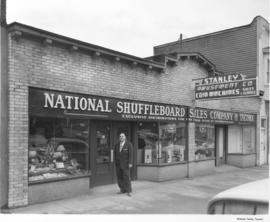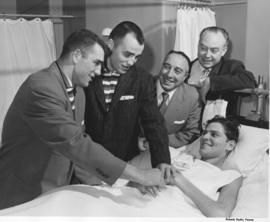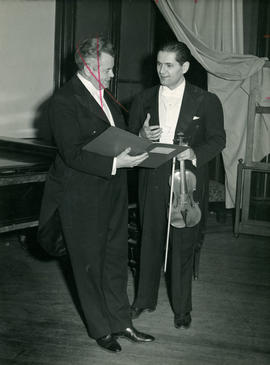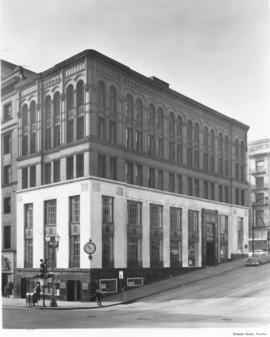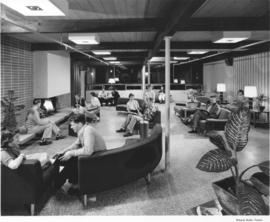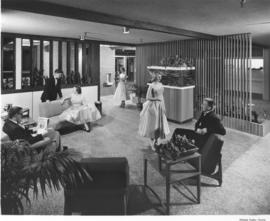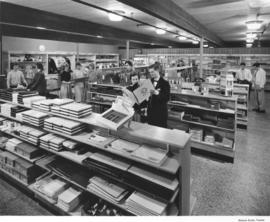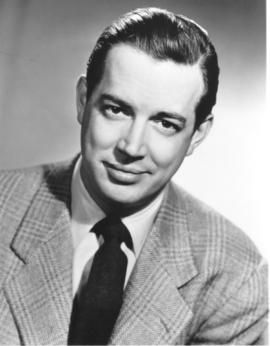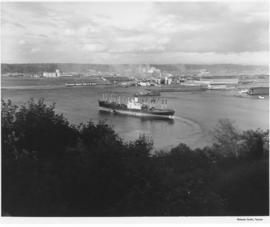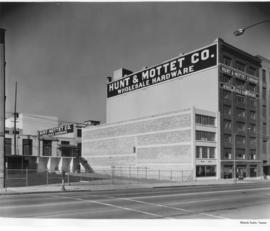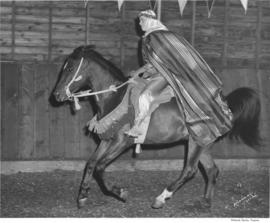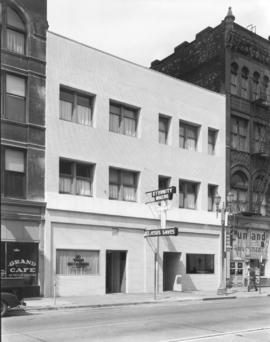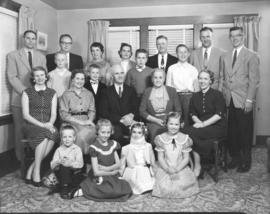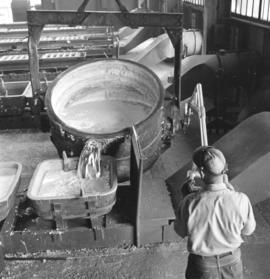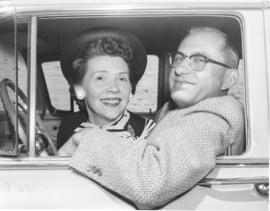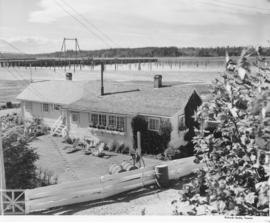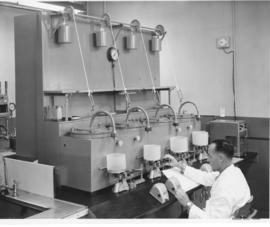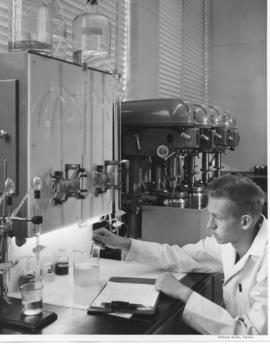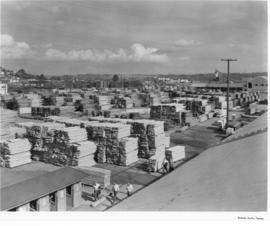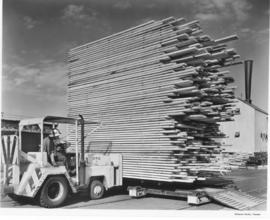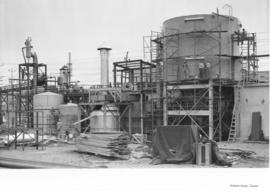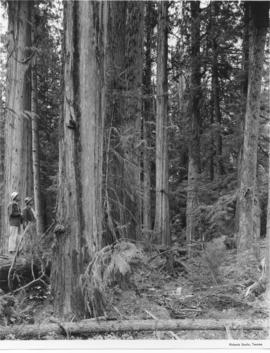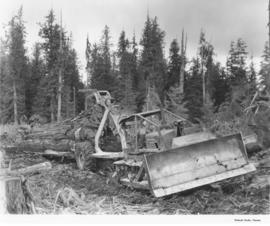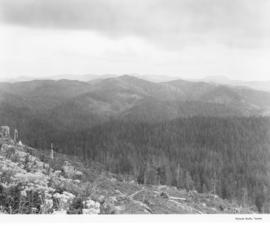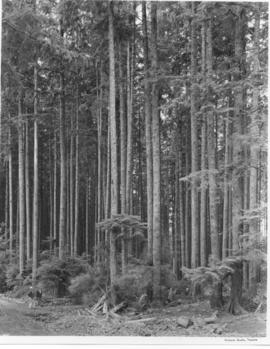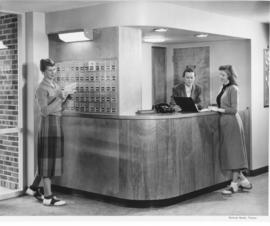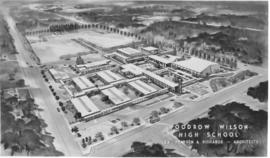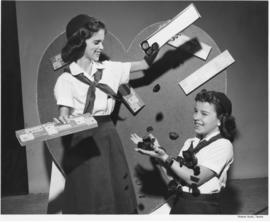- Item
- 1956-01-05
Part of Richards Studio Photographs
An unidentified man stands in front of the National Shuffleboard Sales Company located at 1119 Tacoma Avenue South across the street from the Main Branch of the Tacoma Public Library. Both the Stanley Amusement Co. and the National Shuffleboard Sales Co. of Tacoma were owned by Stanley Kolitzoff and George Sellers in the mid-1950's. The shuffleboard company was the exclusive distributor of shuffleboards for the entire state. Trophies were on display in the storefront windows as well as clocks, blankets and other items used for prizes. The Stanley Amusement Co. sold and serviced coin machines, including apparently riding horses like the one located in the store's display window. This store, originally built in 1922, is currently being restored. ( Photograph ordered by Stanley Amusement Co.)
Stanley Amusement Co. (Tacoma); National Shuffleboard Sales Co. of Tacoma (Tacoma); Facades--Tacoma--1950-1960;
